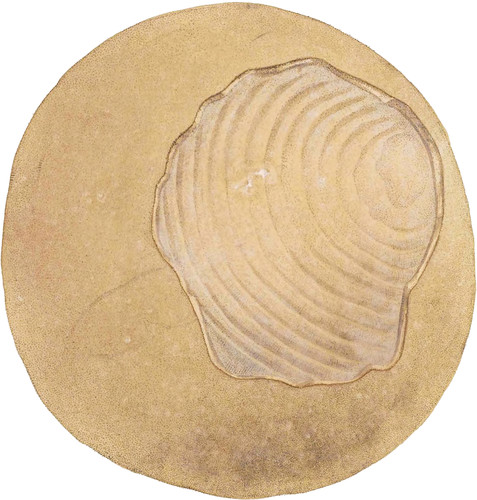 Enlarge
Enlarge
British Mineralogy
Fetid Carbonate of Lime, spherical and concentrated
- Div. 2. Imitative.
Although this substance has been twice figured before, the present specimen is so remarkably curious as to its formation that it must excite astonishment, and I have found that the best description must fall short of giving a proper idea of it without the specimen or a figure. At first it seems a wonder that the spherical ball should be formed so regularly as in this, or so aggregated as in tab. 19; but the somewhat stratified concentric rings, with a sort of coat or covering, (as a formation of stone,) are at present unaccounted for in a satisfactory manner, any more than tab. 38, to which, however, some affinity may be traced. But as the formation is more external, and the inside partly crystallized, although somewhat confusedly, it is still more unaccountable. I broke one on purpose to see how it appeared withinside, expecting a section would either show a continuation of the concentric rings, either in striæ, or casing like an onion, or that I should be led directly to the manner of its formation; but as it does not show what was, or might have been, expected, it may be somewhat satisfactory if I try to account for it, although it may appear a little too theoretical.
On examining the broken one, there are some signs of a crystallization radiating from a pointy or centre, approaching in appearance the inside of tab. 38. Thus the substance consolidated chiefly as to its inside; but being in some pans of a more earthy fracture, there probably was much undissolved matter, which interrupted the crystallization, and so it is occasionally irregular in its appearance. Some parts of the outside, therefore, it seems, were successively covered with these rings, as the water evaporating, in the time of aggregation, allowed of them: afterwards the substance of the coat adhered less perfectly between wet and dry, not so easily attaching to the drier edges of the rings or circles: and this may be in part understood; for it is only where the coat easily separates that these circles are seen, and should we by a little help detach any other adjacent part of the coat, there is little or no continuation of them. Sometimes there are partially two or three coats, some very thin, and occasionally two or three balls are found adhering together with the circles on them. These stones are not always what are called Swine- or Stink-stones, some having little or no Sulphuretted Hydrogen, which I believe is the cause of fetidness in this particular species, though not in all Stink-stones.

